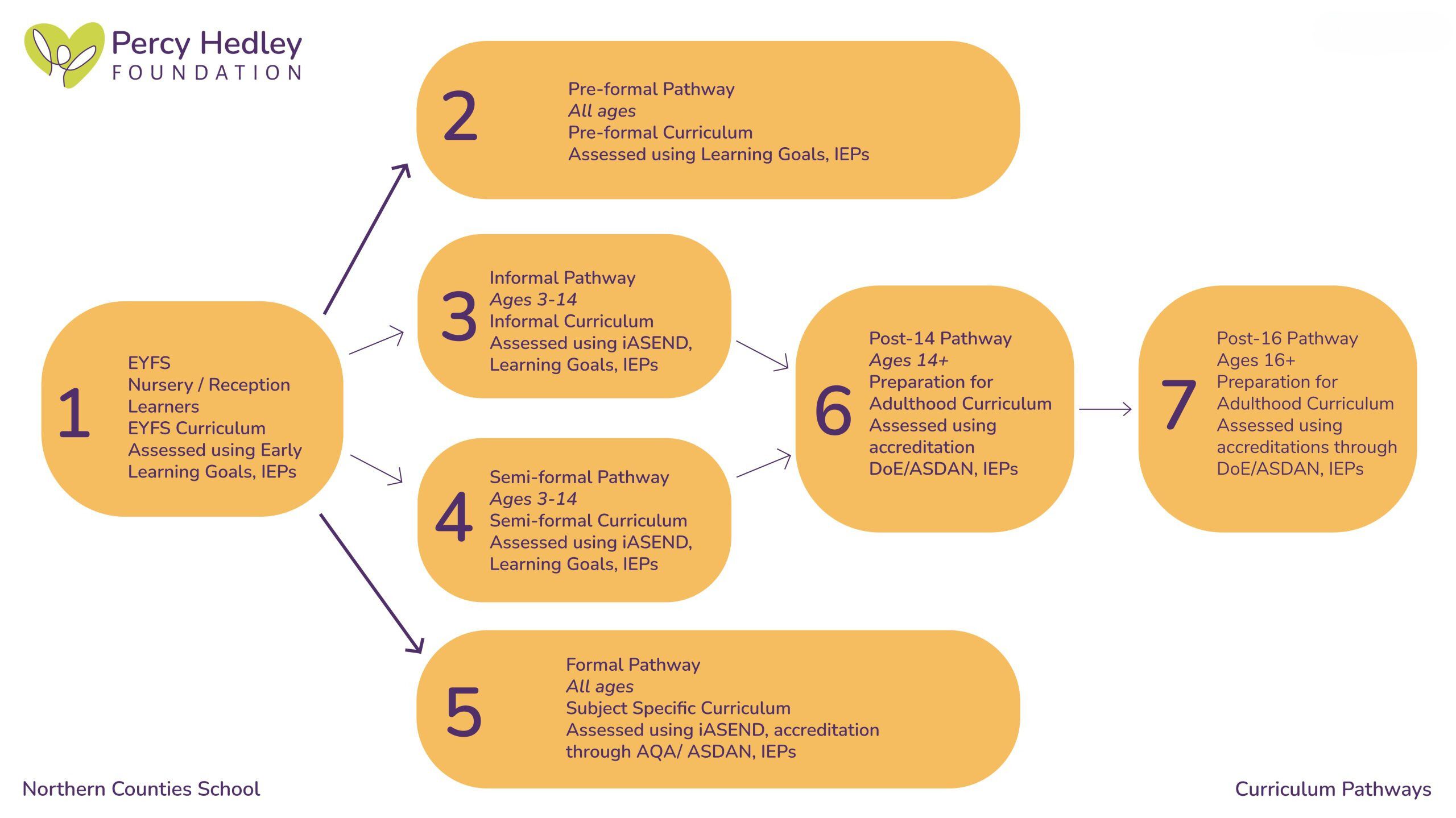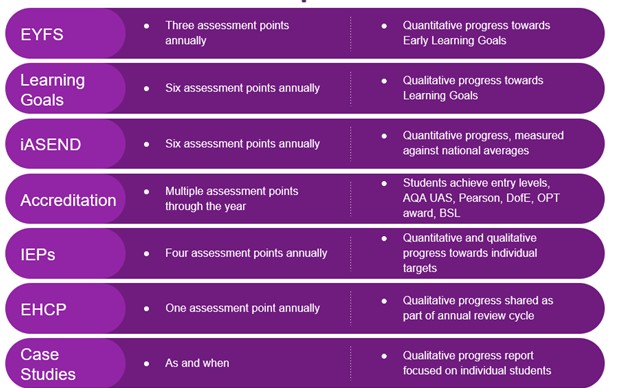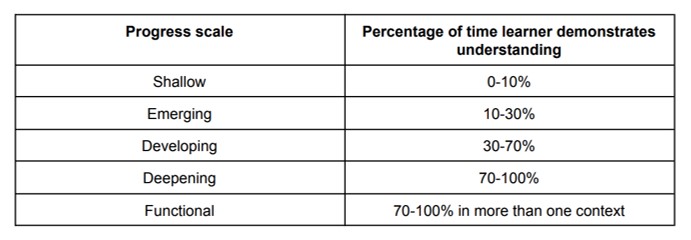
Children’s progress and development is carefully monitored and assessed by teaching staff and therapists. Individual records of progress and achievement are maintained by class teams. All members of the team add their views and advice about the children’s development through regular dialogue, meetings and written reports. A range of assessment tools are used by teachers and therapists to support the evaluation of pupil achievement at all levels of development. The therapists use a range of standardised and non-standardised tools to enable us to identify small steps of progress and thus plan for the next steps of learning.
Measuring Impact

Children’s progress and development is carefully monitored and assessed by teaching staff and therapists. Individual records of progress and achievement are maintained by class teams. All members of the team add their views and advice about the children’s development through regular dialogue, meetings, and written reports. A range of assessment tools are used by teachers and therapists to support the evaluation of pupil achievement at all levels of development. We use a range of standardised and non-standardised tools to enable us to identify small steps of progress and thus plan for the next steps of learning.
We use the iASEND online tool as the assessment framework as it maps directly onto both the National Curriculum and our curriculum offer. The assessment statements can be used as learning objectives, which target learning opportunities at the next steps on an individualised basis. In addition to capturing ‘vertical progress’ (new learning and skills), iASEND captures ‘horizontal learning’ (depth of learning and understanding).
We track learning for all students in:
- English
- Maths
- Science
- Computing
- Personal and social development (PSD)
Additionally, we also track creative learning for some students in:
- Art and design
- Geography
- History
- Design technology
- Music
- Religious education
As part of the first assessment for iASEND, school staff will consider which strand a student is working within; A, S, E, N or D. Each level then contains a list of statements for each subject.
For example S level English “I hold books the correct way up and turn pages”.
Each strand correlates to a developmental stage:
- A – P levels 1-4
- S – P levels 5-8
- E – Key Stage 1
- N – Key Stage 2
- D – Key Stage 3
iASEND covers all levels of attainment from P1(i)e to Key Stage 3 learning objectives (approximately old National Curriculum level 7+). The attainment of all pupils in school can be effectively measured and tracked using this assessment tool. Analysis can take place looking at various cohorts and pupil populations and effective benchmarking with other provisions is easily achievable. iASEND is split into the four core areas of English, Maths, Science and Computing and a range of foundation curriculum areas. The progress is recorded, tracked and analysed in each of these strands. This information is used not only to show progress on an individual level but also collated to show progress across the school in key curricular areas. From this, any area needing a particular focus can be identified and intervention planned.

iASEND Statements
All statements are written in child friendly language, from the child’s perspective. Teachers will then select statements to work on each term and facilitate learning towards these. How frequently statements are changed will depend on the student and their learning journey.
iASEND recognises that learning is not like a ladder. Due to their different needs, students will have individual strengths and areas for development. With iASEND, there is no expectation that students must complete certain statements before moving on to others. Students are able to work towards all statements at all times.
Students’ progress towards statements is measured on a scale from shallow (new skill) through to functional (confident skill). This means we are able to measure the deepening of skills as well as any new skills. The scale for meeting each statement is:

iASEND Targets
At the end of each term, we are able to review the learning and iASEND will give us a percentage progress of the total number of statements, for each child. This allows us to track progress over time and spot any emerging strengths or areas for development. Finally, iASEND enables us to remove statements that are not appropriate for a student due to their specific needs. This means a these statements do not count against a student when we review their percentages.
Teachers set a progress target in September for the coming year, these are based on the average percentage progress achieved by all students using iASEND across the country:
We gather detailed narrative data for our learners using written daily logs and photographic and video evidence through Earwig Academic. This qualitative information then feeds into the annual review cycle and informs the Education, Health and Care Plans. To tighten this cycle, we designed our own ipsative assessment tool linked to the EHCP areas where teachers have the autonomy to set individual learning goals for their students. These goals are summarised on a one page profile which is stored in the student’s daily log file.
The learning goals cover five areas with two or three goals per area set:
- Communication and interaction
- Cognition and learning
- Sensory and physical
- Social, emotional and mental health
- Lifelong learning
Lifelong learning covers those key skills we want all our learners to leave school with; the ability to attract attention, show a preference, communicate feelings and be as independent as possible within the context of their needs.
Learning goals will not cover a set time period, some may run a month, some a year. The important part is that the targets are individual, aspirational and frequently reviewed to ensure they remain appropriate. Each half term, teachers will complete a learning summary for the term – this documents individual progress towards each of the five areas. Teachers then participate in a review with SLT/MLT to discuss learning goals, progress towards these and available evidence. Teachers are encouraged to reflect on the targets frequently and change them as needed – they do not need to wait for the review to make changes. The aim of this assessment model is to empower teachers to follow their initiative without losing their accountability for teaching and learning.
In accordance with legislation, children’s Education Health Care Plans (EHCP) are reviewed annually. An updated report incorporating notes of the annual review meeting is produced each year for every child. Parents are invited to submit a written report to form a part of the review process. Teachers and therapists complete annual reports and contribute views and comments regarding progress, strengths and areas for further development. Additional advice is sought, as appropriate, from other professionals to form an overview of the child. The annual review meeting (to which parents and other professionals are invited) is arranged every year following circulation of all reports and advice submitted by those involved with each child. All reports, an Individual Education Plan and notes from the annual review meeting combine to form each child’s annual review report.
This will therefore usually include:
- Parents’ comments on their child’s development (the parents’ views)
- The child’s views recorded in the most appropriate format
- Annual review report that details progress against the child’s EHCP outcomes.
- A copy of the child’s Individual Education Plan (and transition plan from Year 9 onwards)
- A summary of the annual review meeting
- Recommendations with regard to the child’s needs and future provision
The annual review report is circulated following the annual review meeting to parents, the local authority supporting the child at the school and other involved professionals.
A detailed Individual Education Plan (IEP) is written based on the child’s priorities for development, as detailed in their Education Health Care Plan. Priorities for development form the basis of individual targets in addition to the class based planning within which progress can be monitored. IEP targets are reviewed throughout the term in team meetings and are updated each term. Where a child has made significant progress or needs a target to be broken down into smaller steps, the target is changed at that point in the term.
Teachers and therapists provide:
- Qualitative data through commentary on the IEP document
- Quantitative data through percentage progress achieved
Both are tracked at four assessment points per year, at the annual review and the end of each term.
